Wyoming’s avian tapestry is as rich and varied as its landscape.
Among the rugged mountains, expansive plains, and rolling hills, a host of bird species find refuge and sustenance, painting the air with their melodies and the skies with their winged ballet.
The western meadowlark, the state bird, symbolizes the wild and free spirit of Wyoming, echoing its song across the region.
This state’s bird population encompasses both year-round residents and migratory visitors, each reliant on the unique habitats that Wyoming provides.
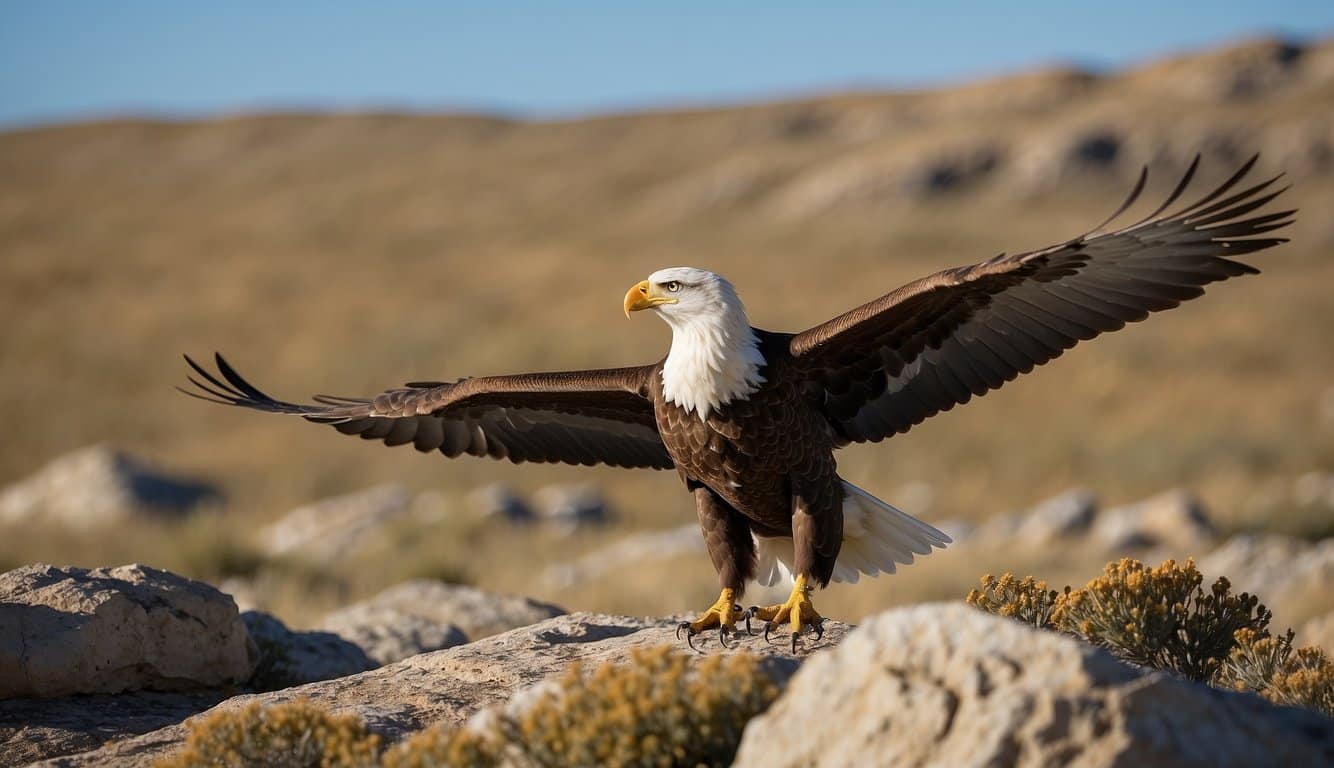
Key Takeaways
- Wyoming’s diverse habitats support a rich variety of bird species.
- Migratory and resident birds make Wyoming a dynamic location for bird-watching.
- Conservation efforts are crucial for sustaining Wyoming’s bird populations.
A Selection of Popular Wyoming Songbirds
| Image | Bird Species | Scientific Name | Preferred Habitat | Notable Characteristics |
|---|---|---|---|---|
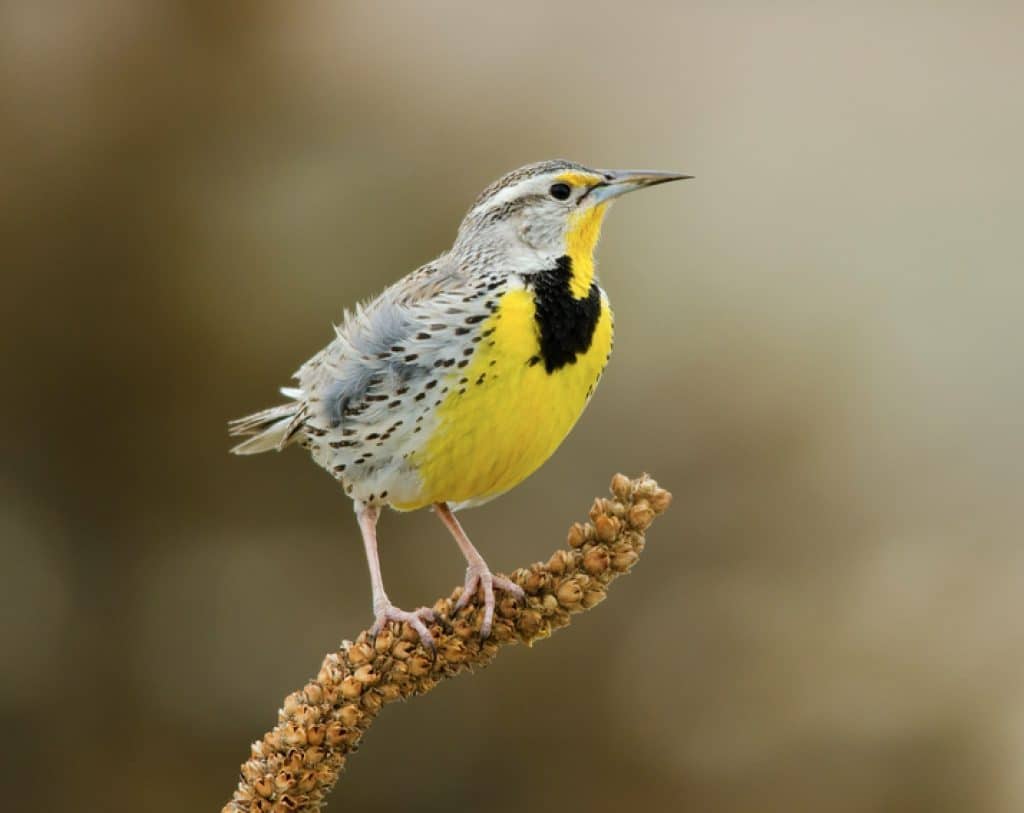 | Western Meadowlark | (Sturnella neglecta) | Open fields, meadows | Bright yellow front, distinctive black “V” on the chest, melodious song |
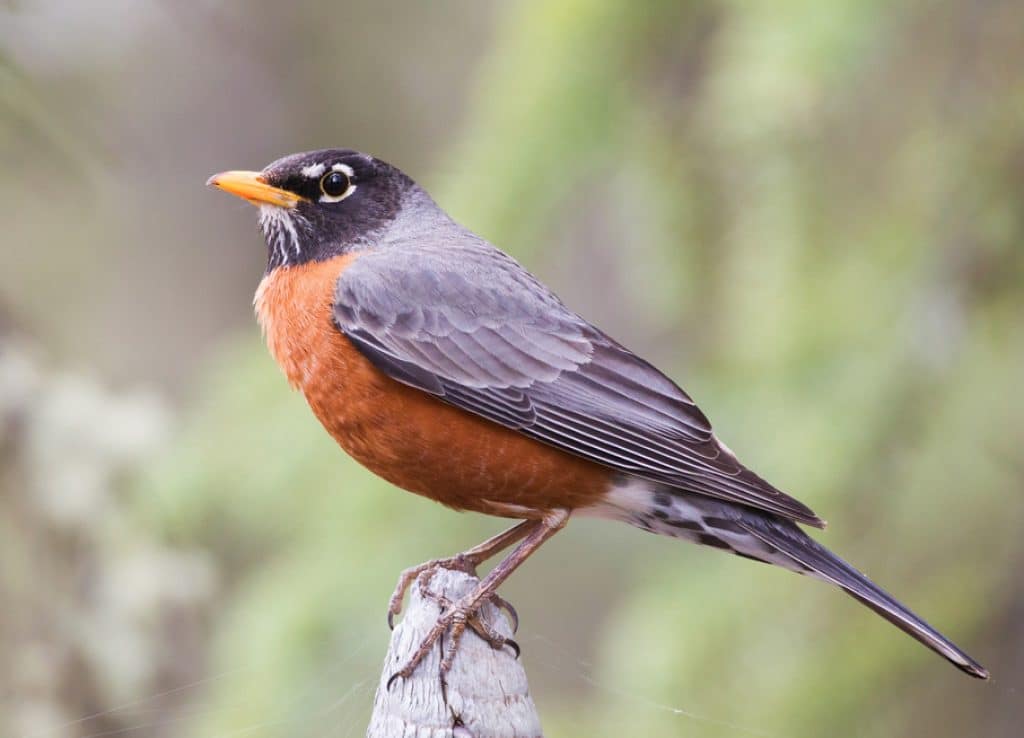 | American Robin | (Turdus migratorius) | Urban and suburban areas, forests | Reddish-orange breast, familiar song, herald of spring |
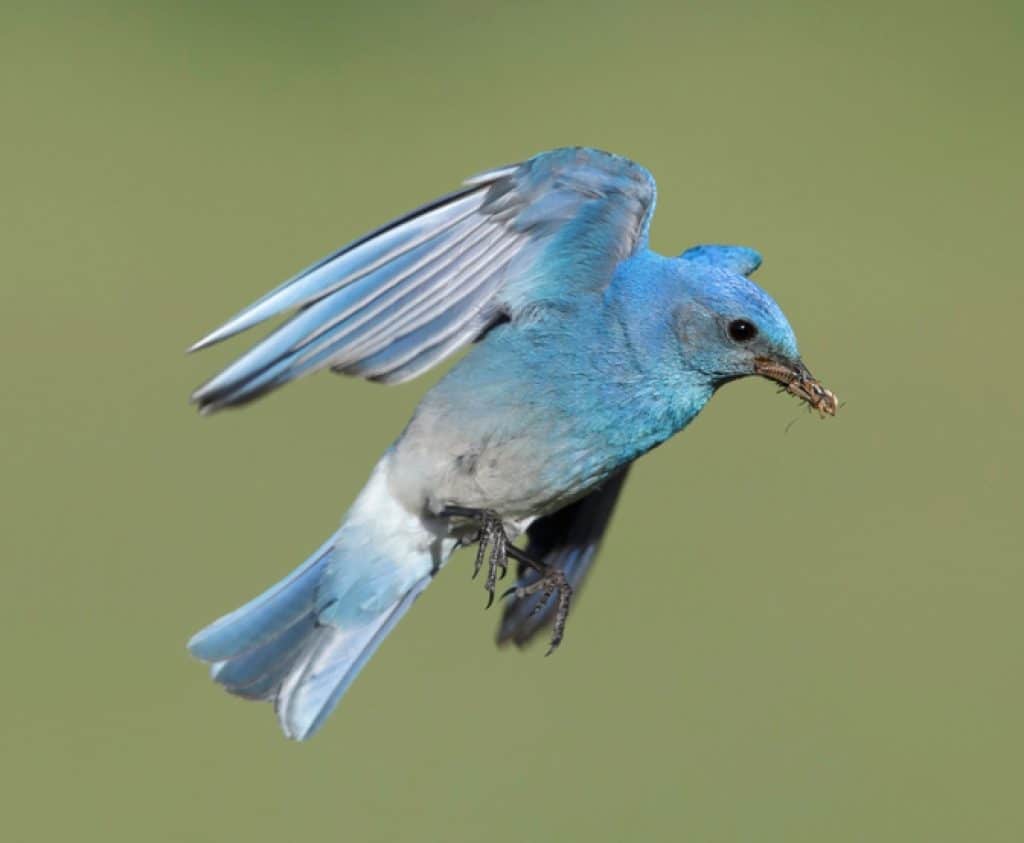 | Mountain Bluebird | (Sialia currucoides) | Open woodlands, meadows | Bright blue for males, pale blue for females, serene presence |
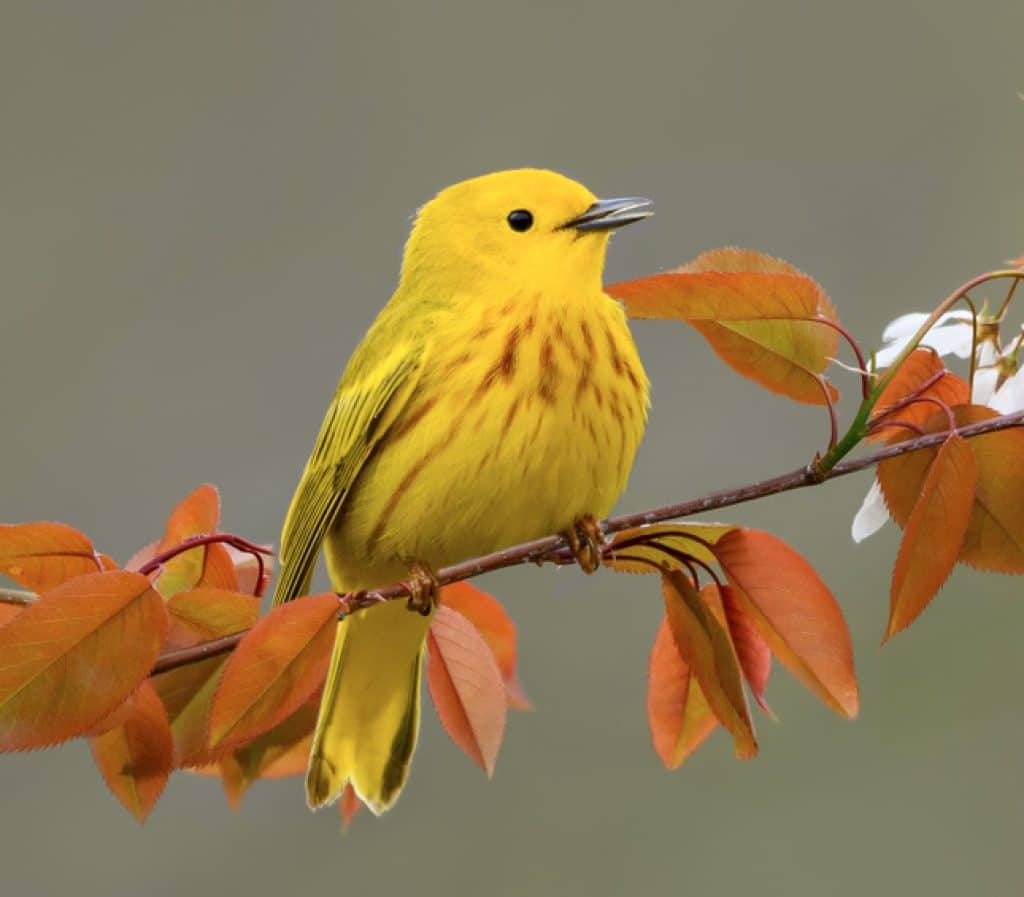 | Yellow Warbler | (Setophaga petechia) | Shrublands, edges of forests | Vibrant yellow all over, sweet, rapid song |
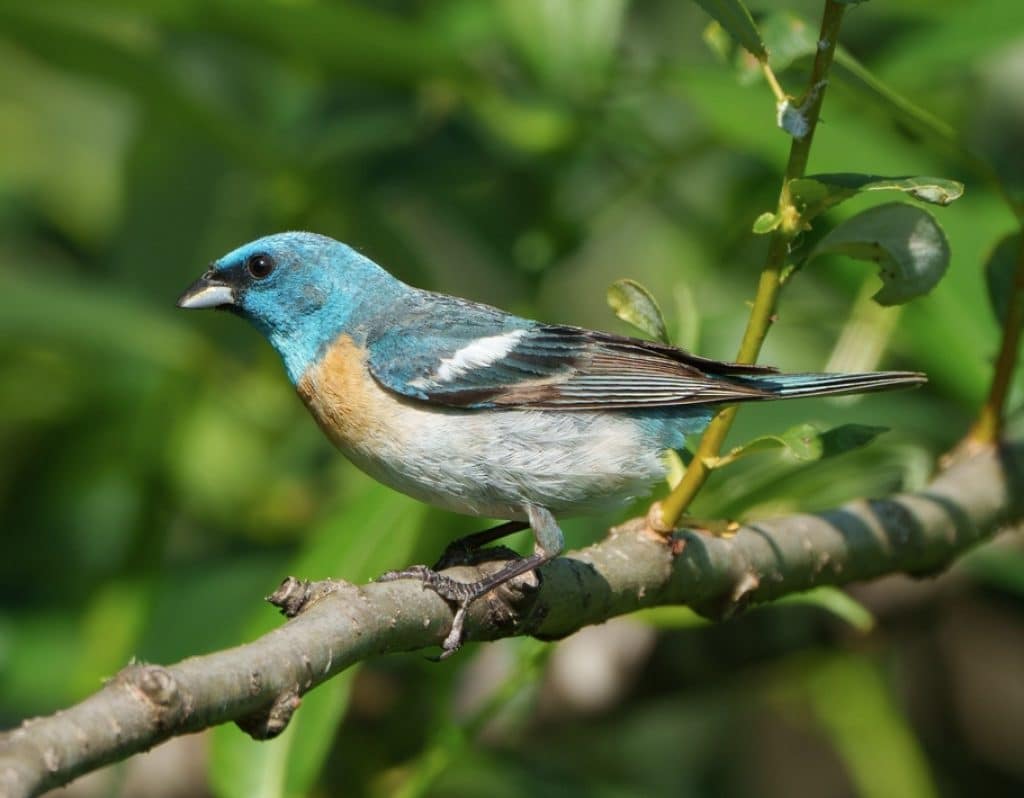 | Lazuli Bunting | (Passerina amoena) | Brushy areas and open woodlands | Males are bright blue and orange, cheerful song |
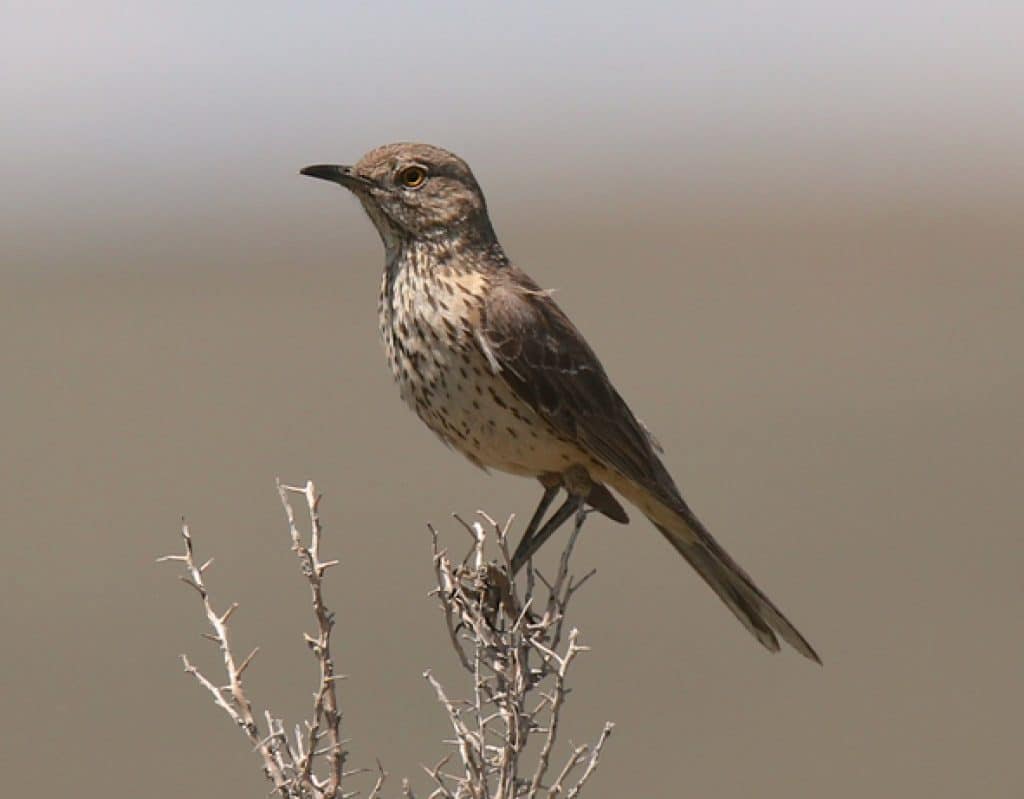 | Sage Thrasher | (Oreoscoptes montanus) | Sagebrush flats | Gray-brown overall, long tail, melodious and varied song |
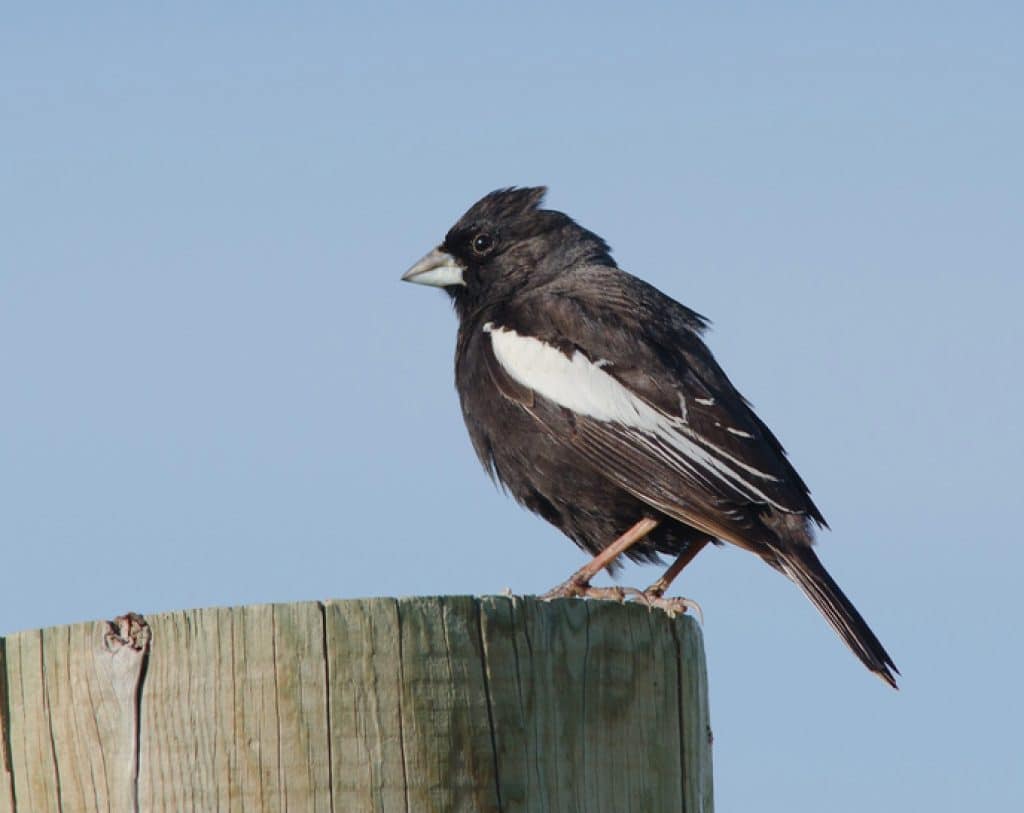 | Lark Bunting | (Calamospiza melanocorys) | Grasslands, prairies | Males are black and white in summer, flocking behavior |
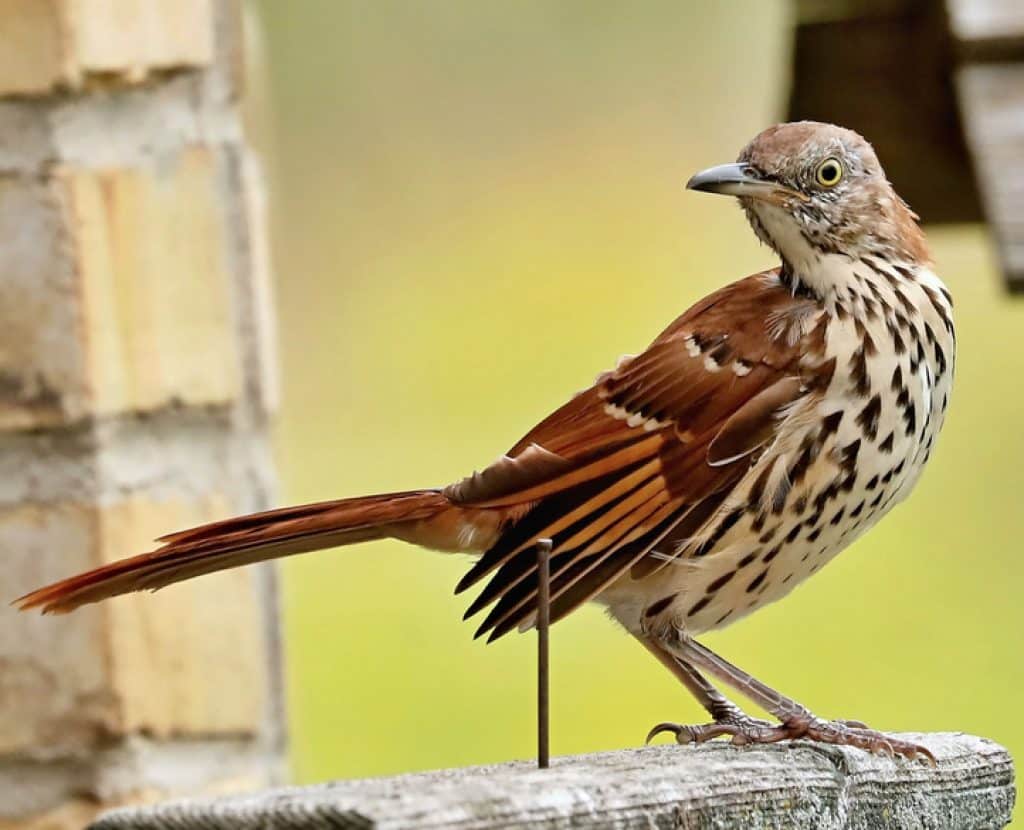 | Brown Thrasher | (Toxostoma rufum) | Thickets, woodlands | Ruddy-brown above, streaked below, incredibly varied song |
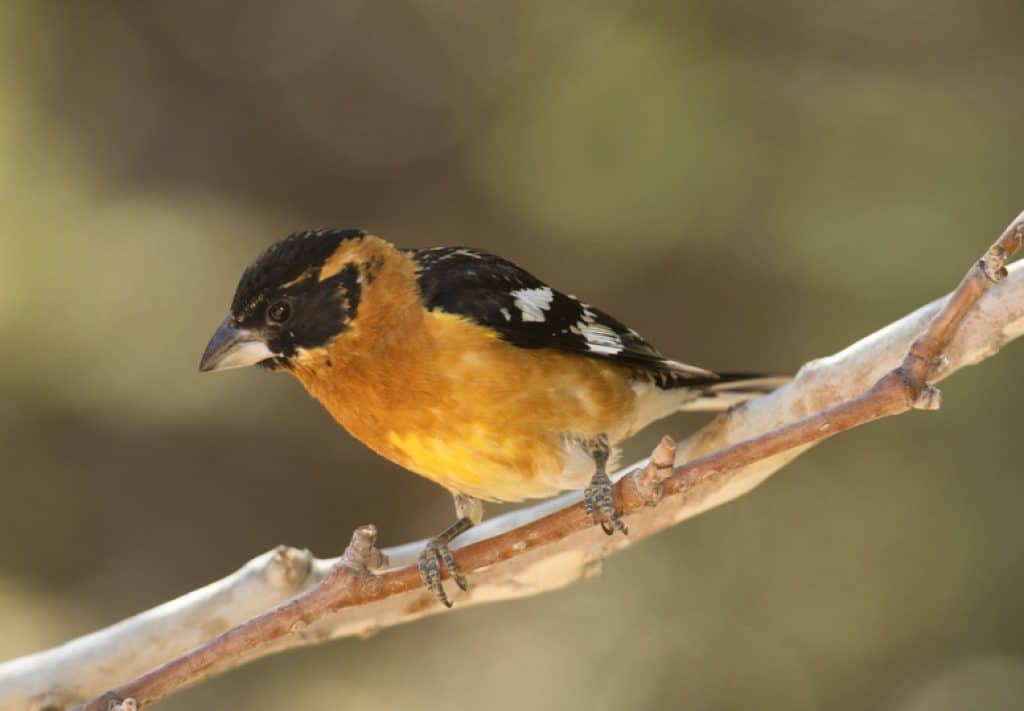 | Black-headed Grosbeak | (Pheucticus melanocephalus) | Woodlands, riparian zones | Orange, black, and white plumage, melodious and flutelike song |
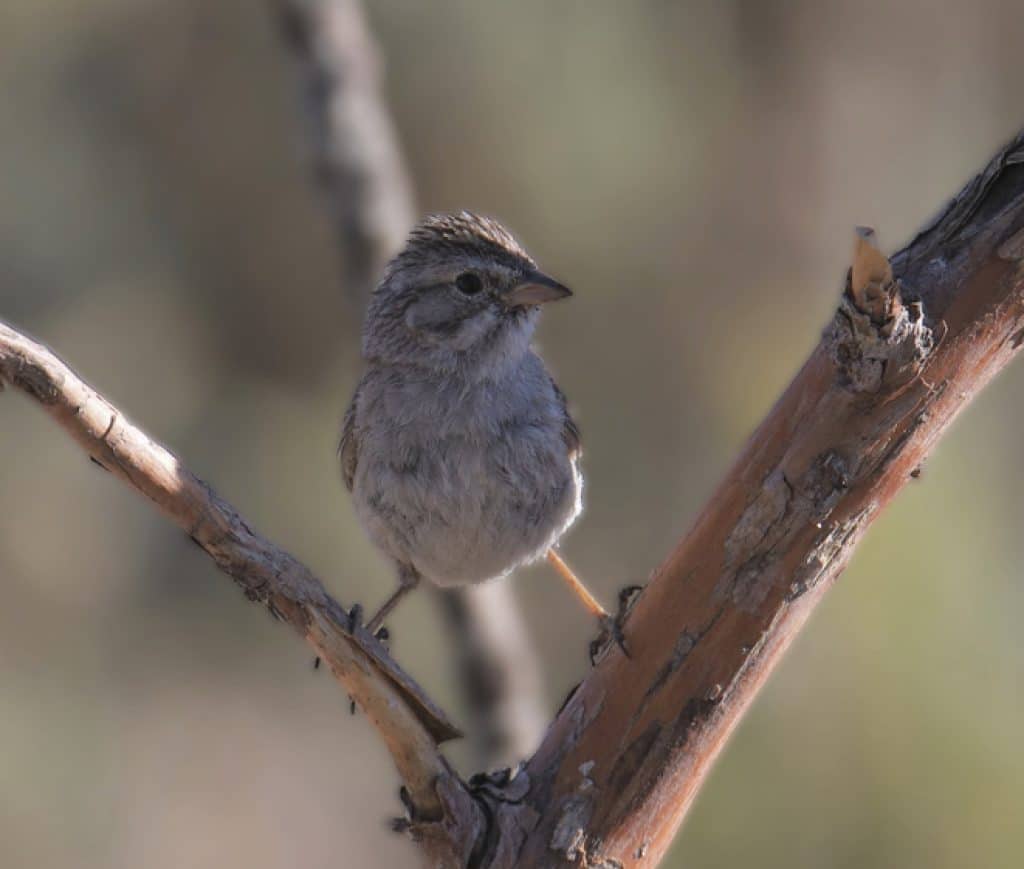 | Brewer’s Sparrow | (Spizella breweri) | Sagebrush deserts, arid landscapes | Grayish overall with subtle streaking, delicate song |
Other Species
| Image | Bird Species | Scientific Name | Preferred Habitat | Notable Characteristics |
|---|---|---|---|---|
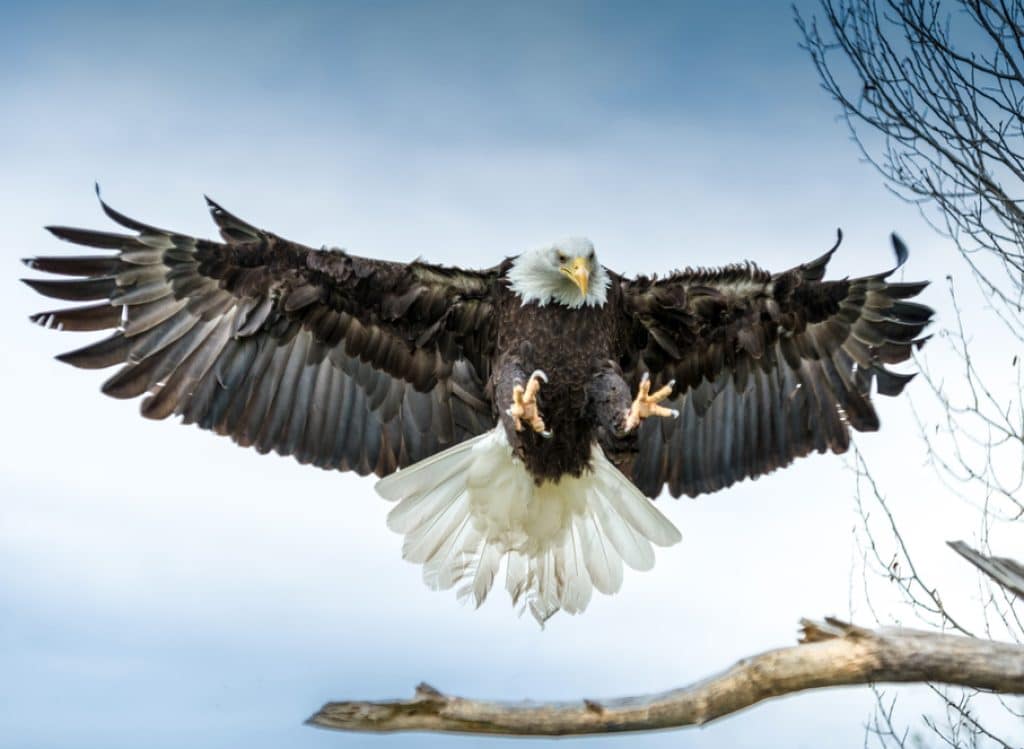 | Bald Eagle | (Haliaeetus leucocephalus) | Lakes, rivers, marshes | Majestic raptor, white head and tail, strong flier |
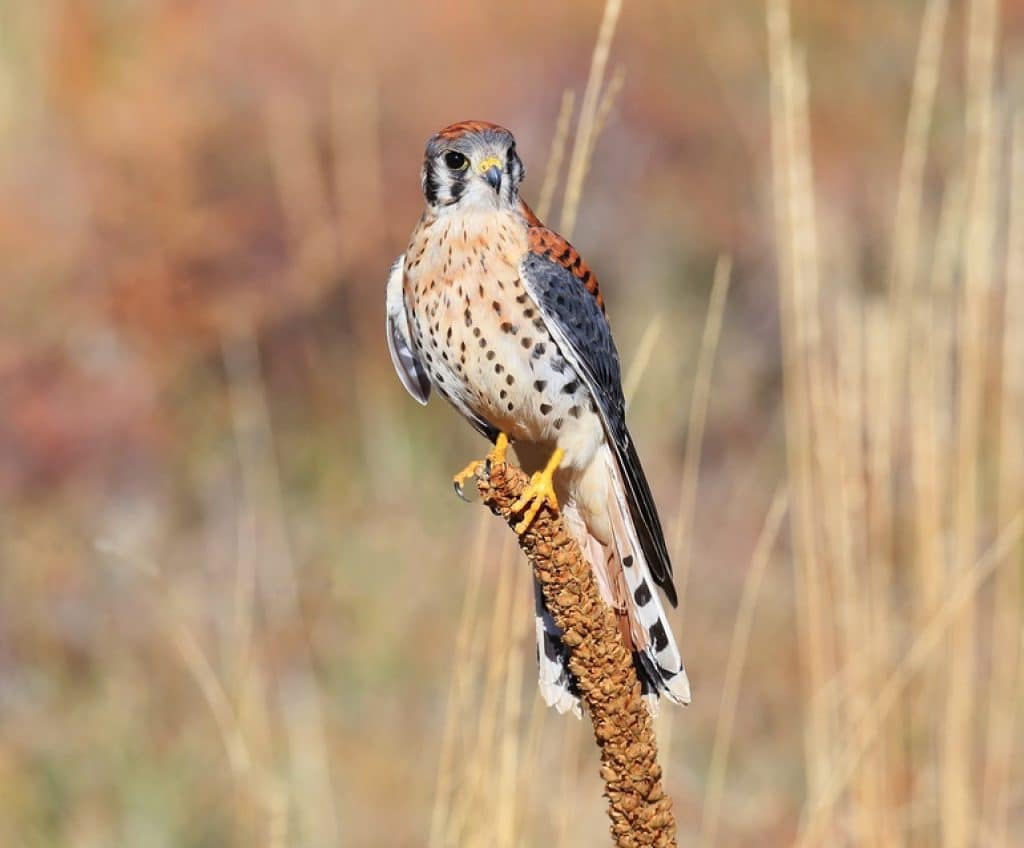 | American Kestrel | (Falco sparverius) | Open fields, meadows, deserts | Smallest falcon, vibrant colors, known for hovering |
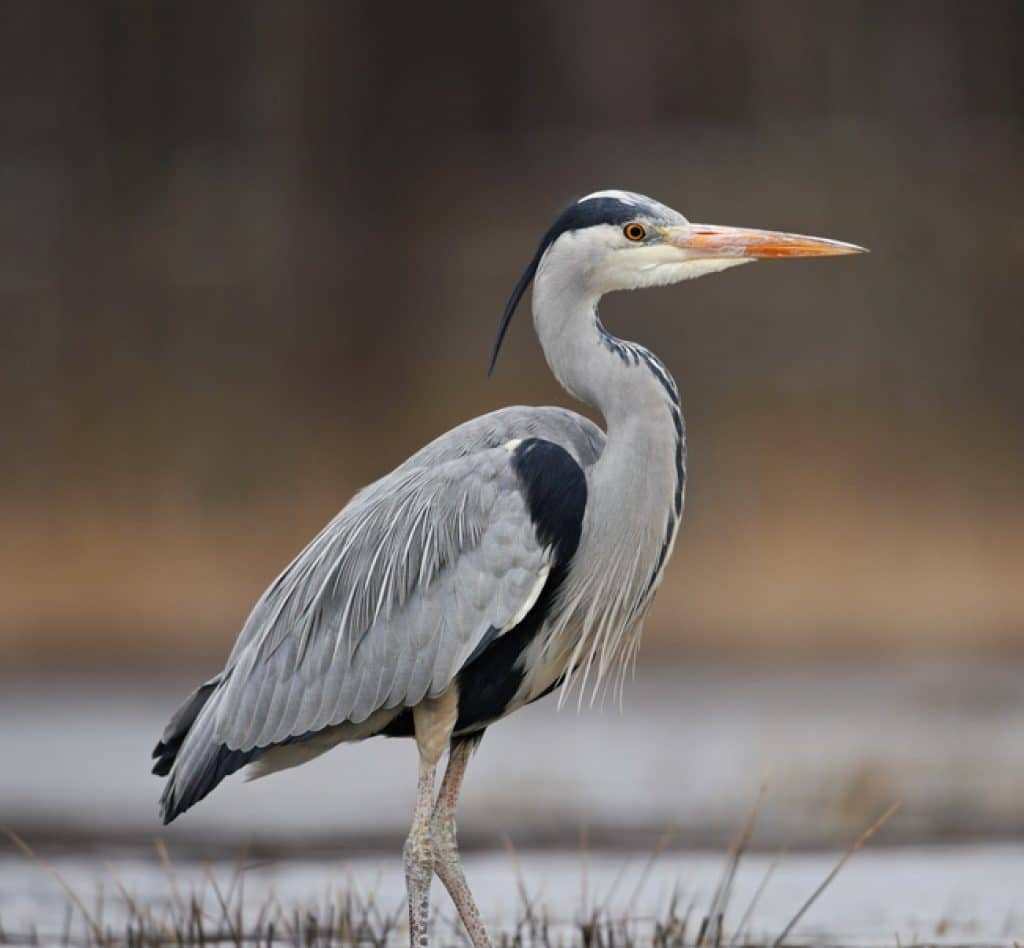 | Great Blue Heron | (Ardea herodias) | Wetlands, rivers, lakes | Large stature, striking blue-gray color, wades in water |
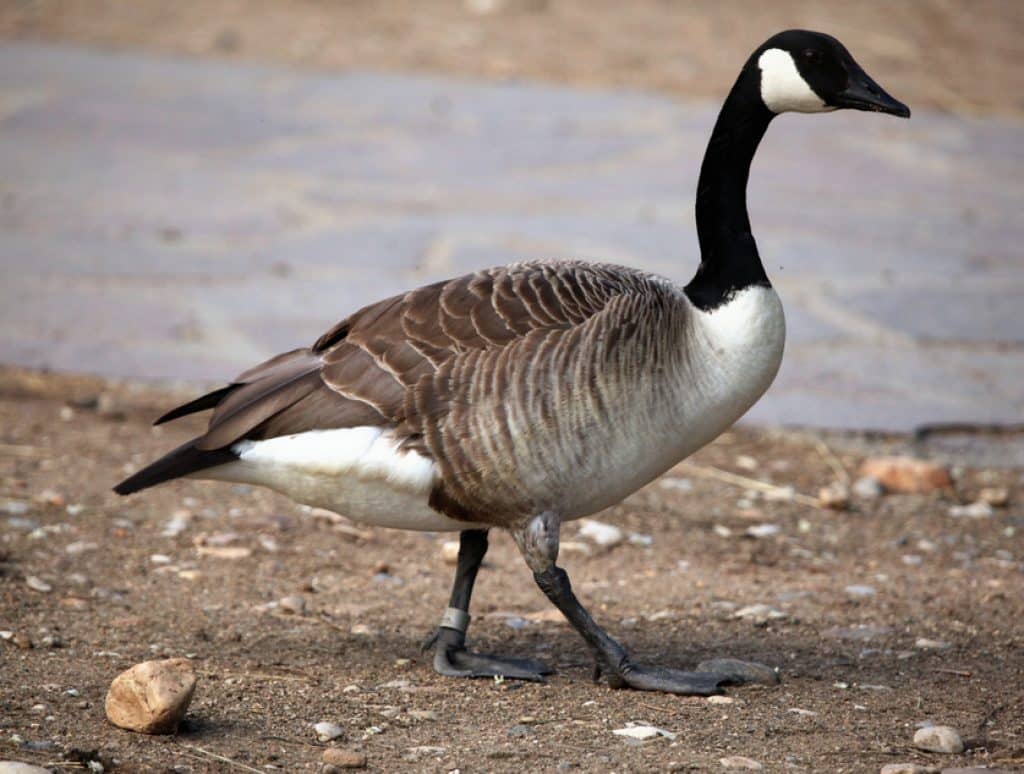 | Canada Goose* | (Branta canadensis) | Lakes, ponds, rivers | Large, familiar waterfowl, black head with white cheeks |
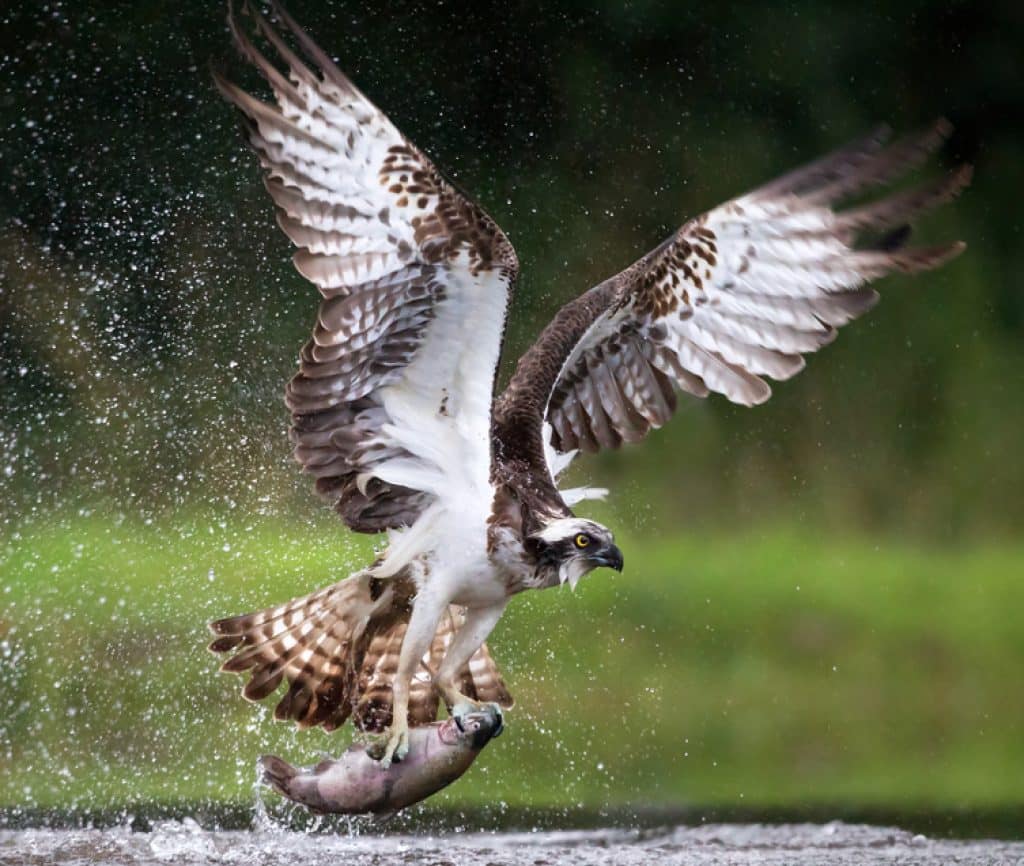 | Osprey* | (Pandion haliaetus) | Near waters nationwide | Fish-eating raptor, dives feet-first, distinctive nest builder |
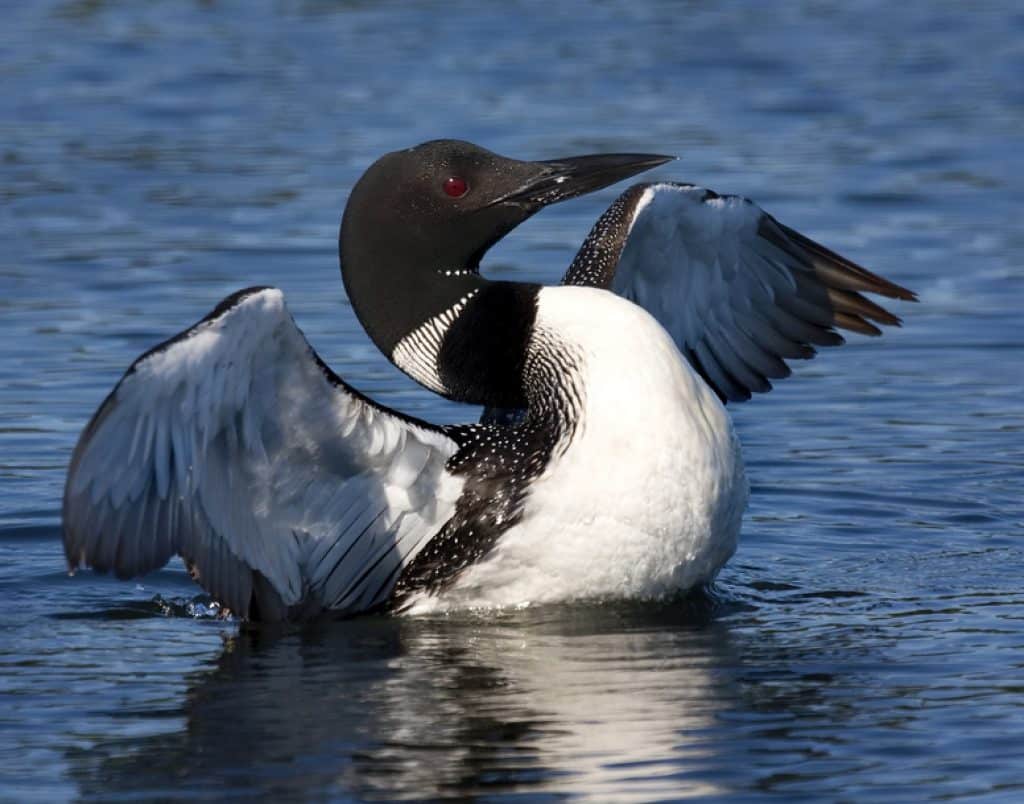 | Common Loon | (Gavia immer) | Lakes, large ponds | Iconic call, striking black and white summer plumage |
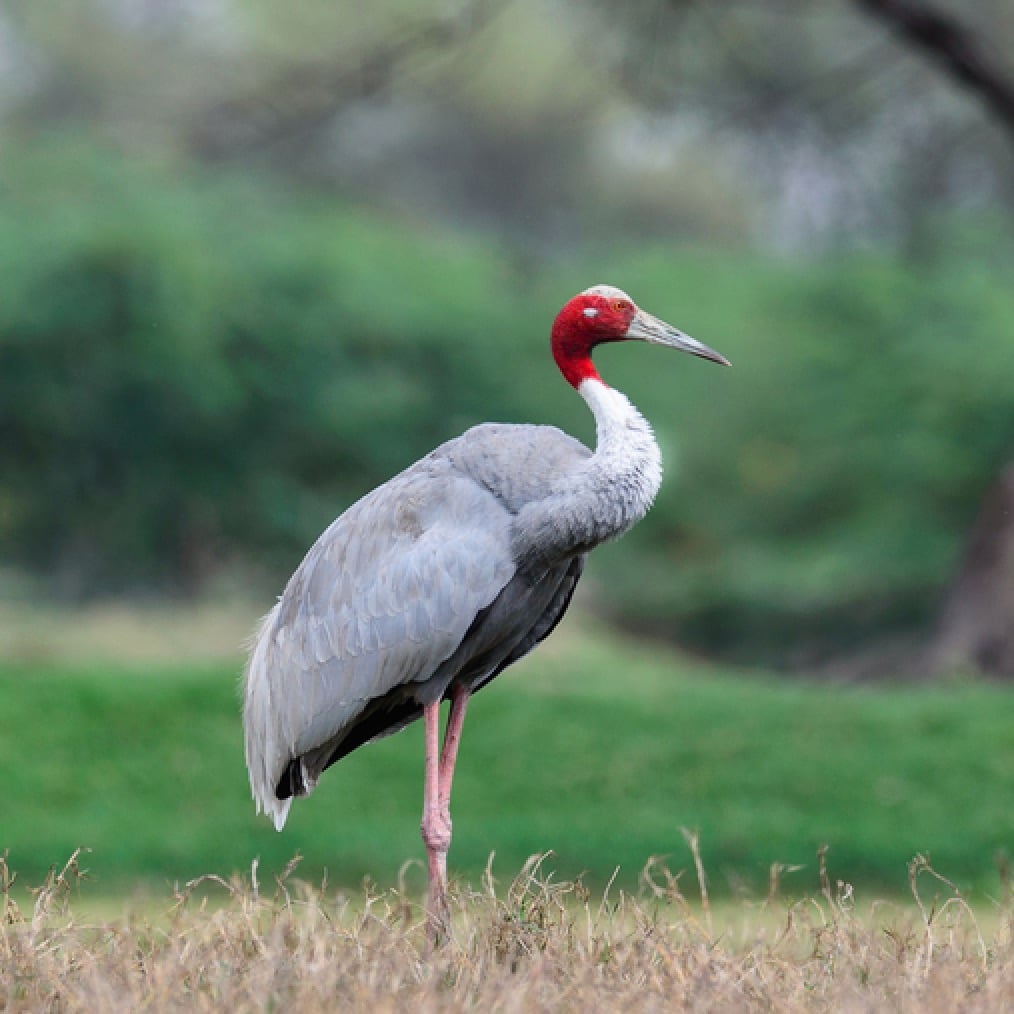 | Sandhill Crane* | (Antigone canadensis) | Wetlands, fields, meadows | Tall and gray with a red forehead patch, unique call |
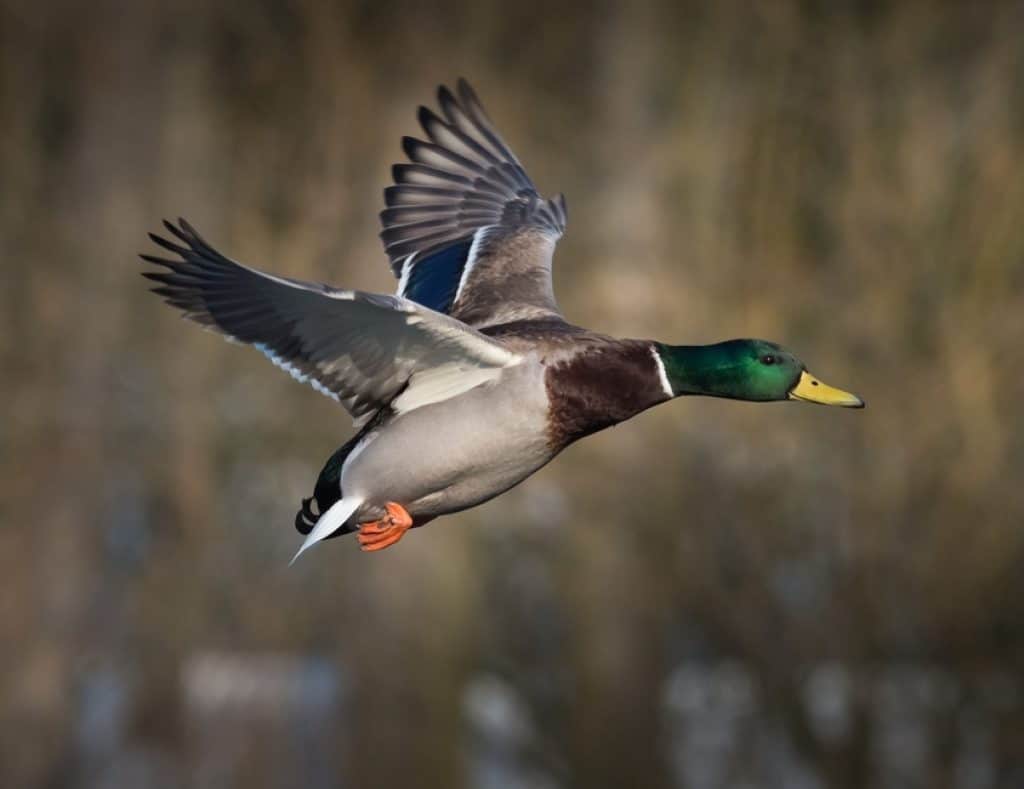 | Mallard* | (Anas platyrhynchos) | Ponds, lakes, rivers | Green head in males, classic duck appearance |
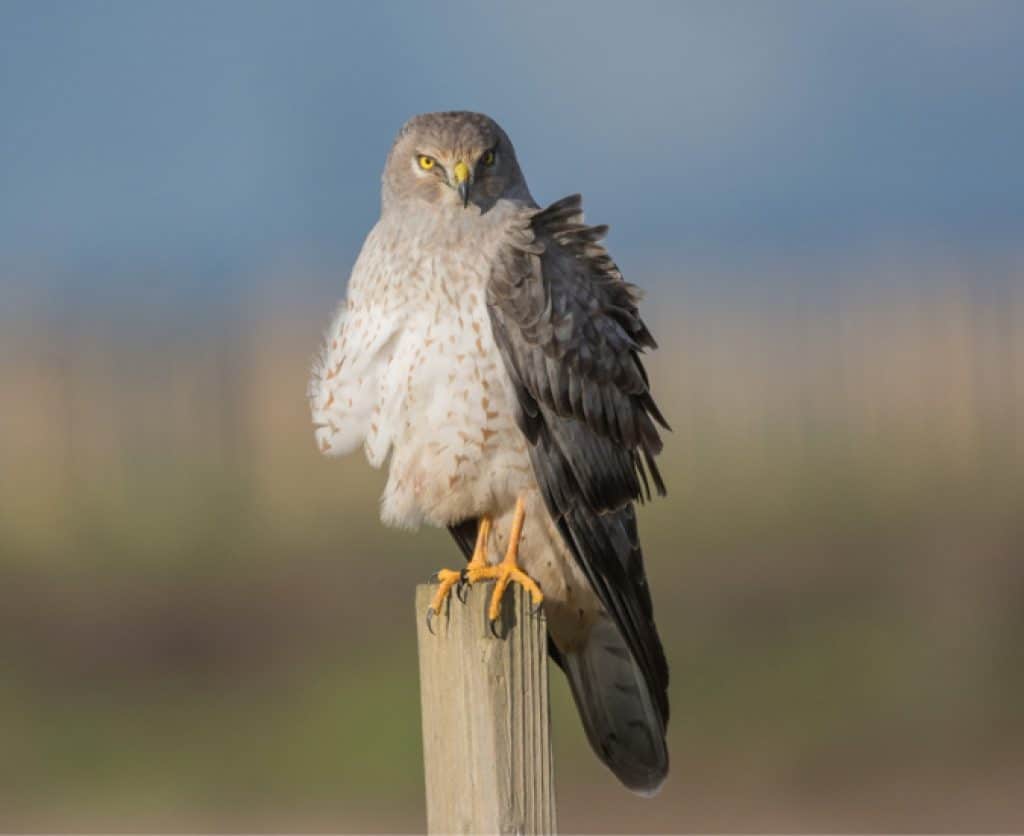 | Northern Harrier* | (Circus hudsonius) | Open fields, marshes | Slim, agile flyer, distinctive white rump patch |
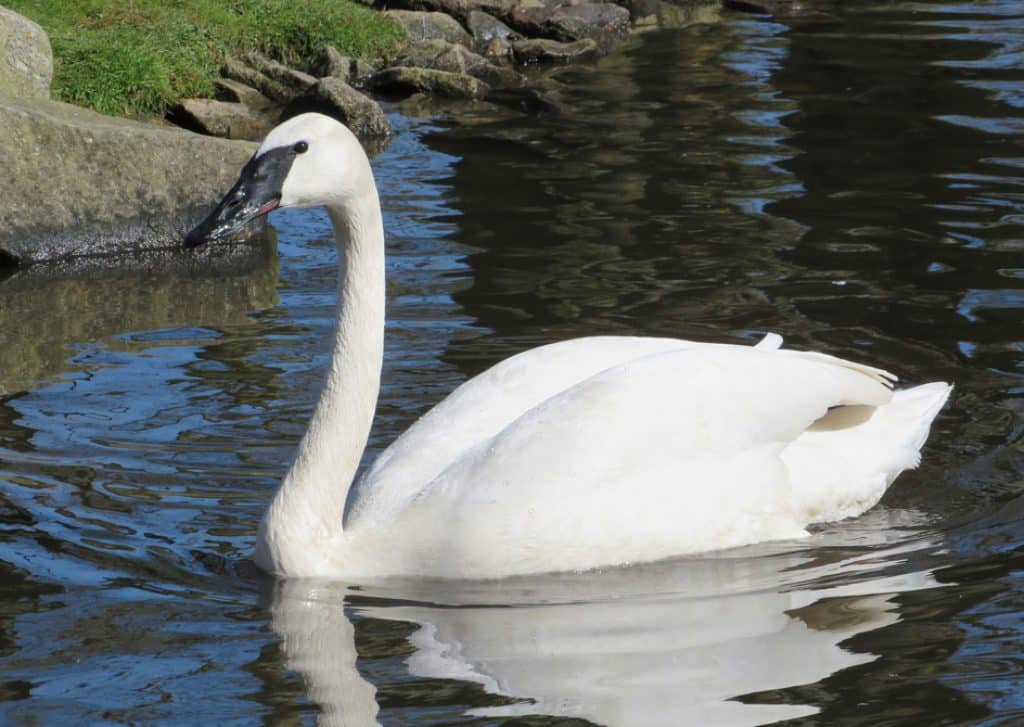 | Trumpeter Swan | (Cygnus buccinator) | Lakes, ponds, large rivers | Largest native waterfowl, all white, loud trumpeting call |
Habitats of Wyoming’s Birds
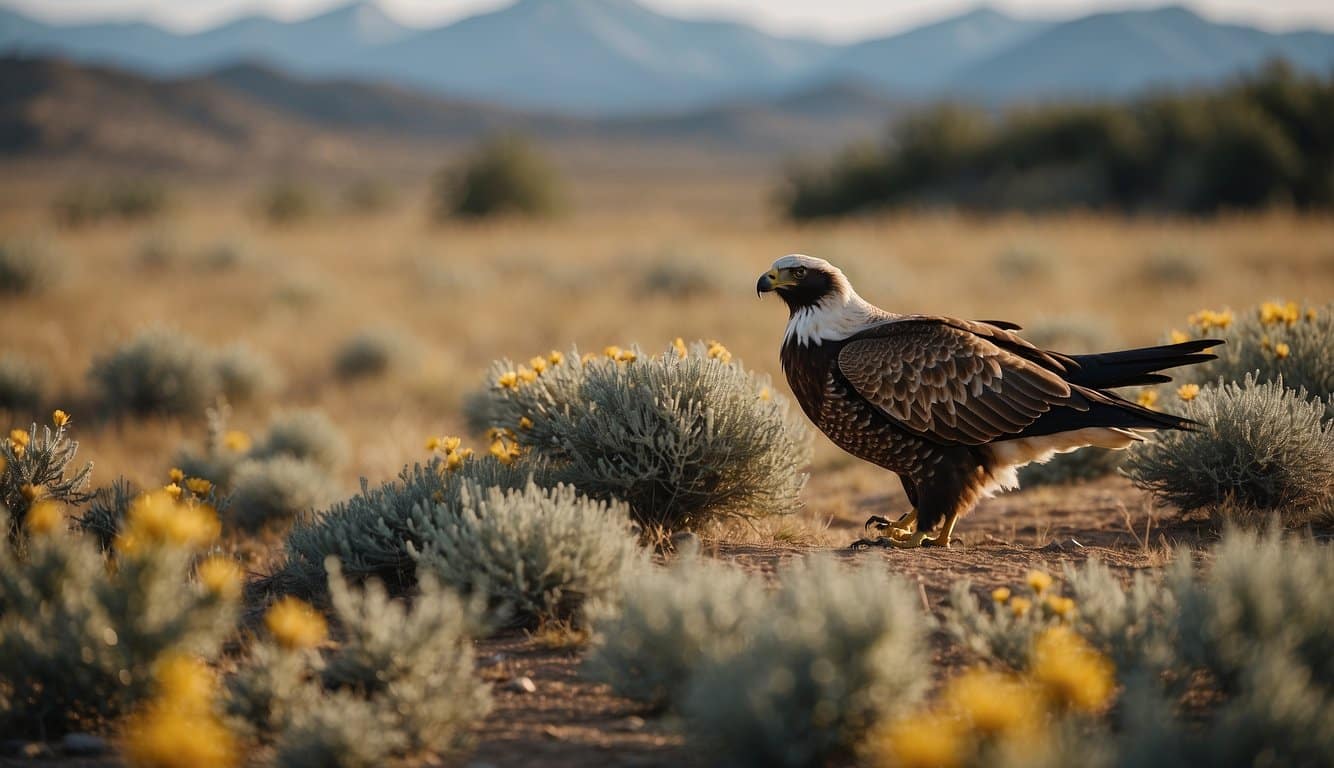
Wyoming provides a diverse range of habitats that are crucial for the survival of various bird species. Each habitat supports a distinct community of birds adapted to its unique conditions.
Grasslands and Prairies
Grasslands and prairies in Wyoming serve as a vital ecosystem for bird species such as the Western Meadowlark, Wyoming’s state bird.
These open spaces with their tall grasses and sparse trees are perfect for ground-nesting birds.
Species that thrive here often exhibit camouflaging plumage to blend into the grassy landscape and have long legs suitable for navigating through tall vegetation.
- Resident Birds: Western Meadowlark, Sprague’s Pipit, Upland Sandpiper
- Nesting Adaptations: Ground nests hidden among grasses
- Predation Avoidance: Camouflaged plumage matching the surrounding flora
Mountains and Forests
The towering Rocky Mountains and dense forests provide habitat for species such as the Clark’s Nutcracker and the Mountain Chickadee.
These environments feature coniferous and deciduous trees that offer food, shelter, and nesting sites.
Birds here must cope with varying elevations and the associated climatic changes.
- Diet: Nuts, seeds, insects, and berries
- Nesting Sites: Cavities in trees and rocky crevices
- Elevation Range: Different species adapted to varying heights within the mountains
Wetlands and Rivers
Wyoming’s wetlands and rivers are crucial for migratory birds like the Whooping Crane, as well as year-round residents such as the Bald Eagle.
These aqueous environments provide abundant food sources, such as fish and aquatic invertebrates, and vegetation for shelter and nesting.
The health of these water-based ecosystems is paramount for maintaining bird populations.
- Migration Stopover: Essential for species like the Whooping Crane
- Diet: Amphibians, small fish, crustaceans
- Nesting Characteristics: Often built near or on water, providing safety from many ground predators
Common Bird Species
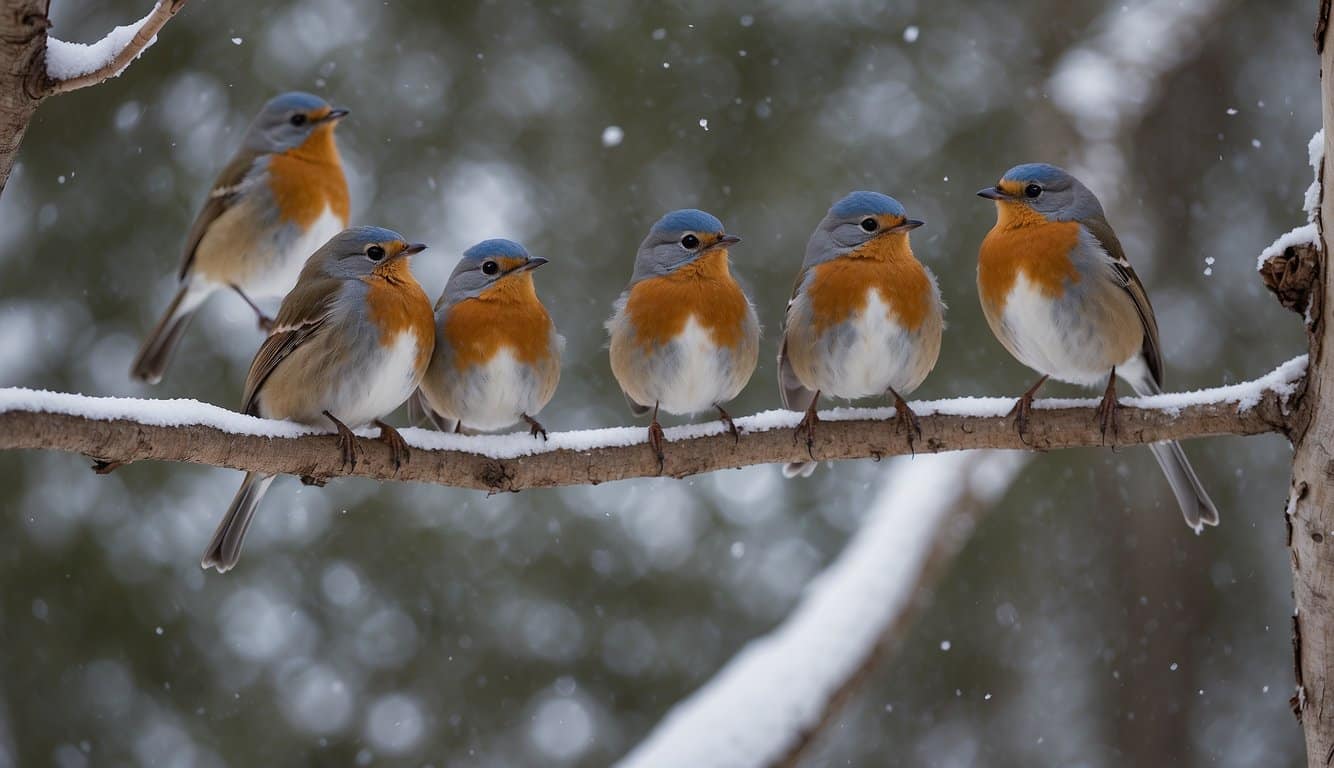
Wyoming’s skies and landscapes are graced by an array of birds, from the powerful raptors soaring above to the melodious songbirds filling the air with their tunes, down to the waterfowl and shorebirds that congregate along its waterways.
Raptors and Birds of Prey
These birds are known for their keen eyesight, strong talons, and hunting prowess.
Notable species include the Bald Eagle and Red-tailed Hawk, which dominate the open skies as apex predators.
The Bald Eagle, with its impressive wingspan and striking white head, is often spotted near bodies of water, while the Red-tailed Hawk, identifiable by its reddish-brown tail, is a common sight perched on fence posts scanning for prey.
Songbirds and Passerines
The Western Meadowlark, designated as Wyoming’s state bird, is a familiar sight with its bright yellow throat and melodic song.
Another common passerine is the American Robin, easily recognized by its reddish-orange breast and cheerful song.
These birds are a vital part of the ecosystem, contributing to insect control and seed dispersal.
Waterfowl and Shorebirds
Wyoming’s lakes, rivers, and wetlands are essential habitats for various waterfowl and shorebirds.
Species like the American White Pelican stand out due to their grand size and are frequently observed gracefully gliding across water surfaces or fishing in groups.
In contrast, more diminutive but equally important species such as the Mallard, with its iridescent green head, can be seen dabbling in shallows.
Migration Patterns
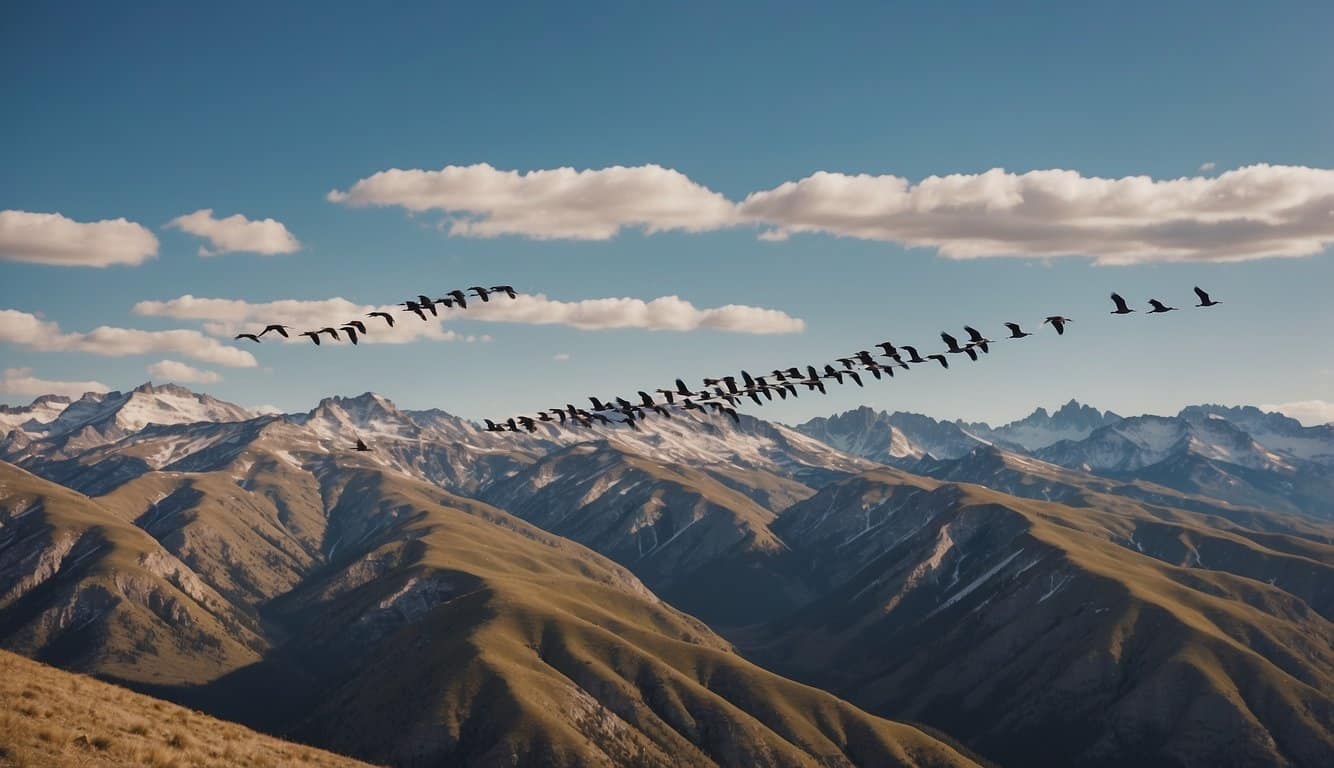
Wyoming’s avian landscapes come alive with the ebb and flow of bird migration, where numerous species traverse vast distances in a seasonal spectacle.
Spring Migration
With the onset of spring, bird enthusiasts witness a grand procession as thousands of birds return to Wyoming.
After wintering in the south, species such as the Mountain Bluebird and the Western Meadowlark journey back, heralding the season’s start.
Key zones like Yellowstone National Park and the Bighorn Basin offer abundant opportunities to observe migratory birds amidst blooming flora.
- Early Arrivals: Typically by mid-March when the snow melts
- Peak Migration: Ranges from late April through May
- Species to Watch: Sandhill Cranes, American White Pelicans
Hotspots for Spring Viewing:
- Grand Teton National Park
- Seedskadee National Wildlife Refuge
Fall Migration
Conversely, fall migration marks a period of departure as avian inhabitants bid farewell to Wyoming’s landscapes.
Fueled by the imperative to find suitable overwintering sites, these birds chart courses towards warmer southern latitudes.
This passage typically begins in August, with some species lingering until the first frosts of November.
- Initial Departures: Often start as early as August
- Peak Migration: Occurs between September and October
- Species to Monitor: Broad-winged Hawks, Warblers
Optimal Spots for Fall Observation:
- Wind River Range
- Cheyenne Bottoms Wildlife Area
Conservation Efforts
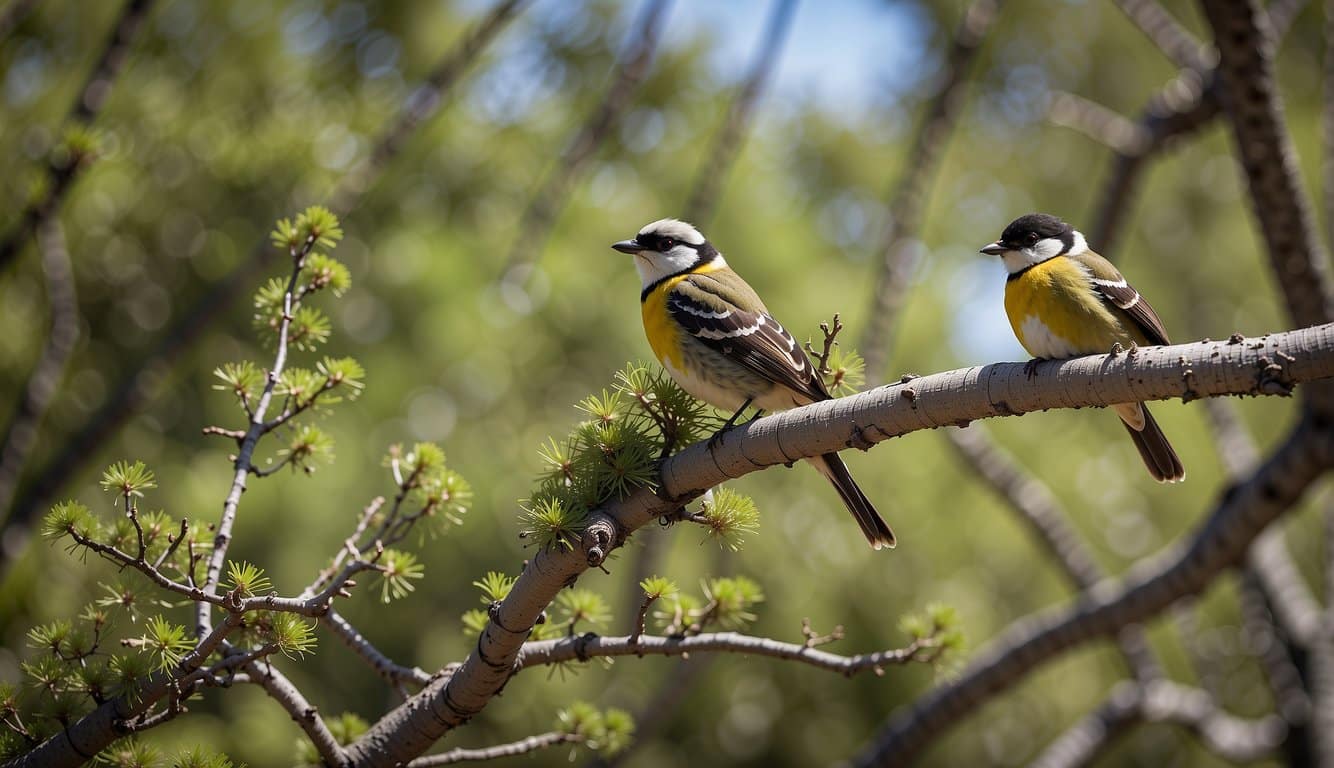
Wyoming demonstrates a strong commitment to bird conservation, employing strategies such as legislation, habitat restoration, and wildlife management to ensure the protection of its diverse avian populations.
Protection Legislation
Wyoming has adopted various legislative measures to safeguard birds and their natural habitats.
This includes the endorsement of federal acts and local laws designed to address the unique environmental challenges faced by bird species in the state.
Notable among these is the support for the “America’s Wildlife Habitat Conservation Act,” highlighting a collaborative approach to conservation.
Habitat Restoration
Habitat restoration is crucial for maintaining the health and diversity of bird populations in Wyoming.
Initiatives to restore habitats involve the reestablishment of native vegetation, the rectification of land degraded by human activities, and the creation of buffer zones to minimize the impact of urban and agricultural development.
These efforts contribute significantly to the conservation of Wyoming’s birds, enabling them to thrive in their natural ecosystems.
Wildlife Management
The management of wildlife, particularly birds, in Wyoming is informed by ongoing research and monitoring.
Strategies employed include:
- Species Monitoring: Tracking bird population trends to identify species at risk.
- Habitat Management: Tailoring conservation actions to the needs of specific habitats and species.
- Educational Outreach: Raising public awareness about birds and their conservation.
Dedicated organizations work in concert to ensure these wildlife management practices are scientifically sound and effectively applied across the state’s varied landscapes.
Frequently Asked Questions
Wyoming is renowned for its rich bird life, boasting a plethora of species that thrive across its diverse landscapes. This FAQ addresses common inquiries on the state’s avian inhabitants, identifying large and small birds, and tools for birdwatching aficionados to enhance their experience.
What species of large birds are commonly found in Wyoming?
Wyoming’s expansive skies are home to several large bird species.
Prominent among them are the Bald Eagle, Golden Eagle, and the Sandhill Crane. These birds are often found in habitats ranging from the open plains to the riparian zones along rivers.
Which birds are most frequently encountered across different regions of Wyoming?
The American Robin is a common sight in many parts of Wyoming.
Other frequently encountered birds include the Western Meadowlark, state bird of Wyoming, and the Mountain Bluebird.
Region-specific birds vary, with species like the Yellow Warbler and American Goldfinch seen during the summer months.
What guidebooks are recommended for birdwatching in Wyoming?
For enthusiasts aiming to delve into birdwatching within Wyoming, the ‘Field Guide to Birds of Wyoming’ and the ‘National Audubon Society Field Guide to North American Birds’ are highly recommended. These guidebooks provide comprehensive information on local species and identification tips.
How do you identify different bird species in Wyoming through their physical characteristics?
Bird identification often relies on recognizing physical characteristics such as plumage color, beak shape, size, flight patterns, and distinctive markings.
For instance, the Trumpeter Swan displays an all-white body and black beak, which distinguishes it from other waterfowl.
What characteristics distinguish black and white birds in Wyoming?
Black and white birds in Wyoming can be identified by their specific patterns and features.
The Downy Woodpecker exhibits a striking black and white plumage with a red patch on the back of its head, while the Black-billed Magpie is known for its long tail and iridescent blue wing patches.
Which small birds can be observed in Wyoming’s various habitats?
Wyoming offers a habitat for a diverse array of small birds. The Ruby-crowned Kinglet and Bushtit are found in forested areas. Meanwhile, grasslands may host Lark Buntings and Sparrows.
Hummingbirds, particularly the Rufous Hummingbird, are common in residential and wildflower-rich areas during migration seasons.